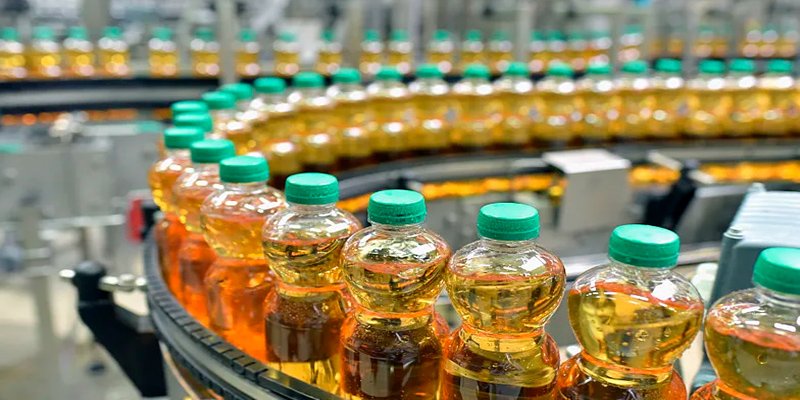Automated vs Manual Bottling Line Equipment: Which Is Right for You?

The Bottling Dilemma Facing Modern Producers
If you’re launching or scaling a beverage production line—whether it’s bottled water, juice, craft soda, or even sauces—you’ve likely faced a critical question: Should you invest in automated or manual bottling line equipment?
With today’s production demands increasing and labor costs rising, this decision has a significant impact on your business’s future. But automation isn’t always the obvious answer—especially for startups or small-scale operations with tighter budgets and simpler needs.
This article compares both types of equipment in-depth, helping you understand the pros, cons, and real-world considerations that influence the right fit for your business.
1、 Understanding the Core Differences Between Manual and Automated Bottling Equipment
What is Manual Bottling Line Equipment?
Manual bottling systems rely on human labor to perform the bulk of the bottling process—filling, capping, labeling, and packaging. The machines used are often simple, semi-automatic devices or even hand-operated tools.
Common traits:
-
Lower upfront investment
-
Greater flexibility for customization
-
Requires skilled operators
-
Best suited for small batch production or artisanal products
What is Automated Bottling Line Equipment?
Automated bottling equipment involves an integrated system that performs rinsing, filling, capping, and labeling with minimal human intervention. These systems use PLCs (programmable logic controllers), sensors, and conveyors to create a continuous, streamlined process.
Typical benefits:
-
High-speed operation (from 2000 to 36,000 bottles/hour)
-
Precision in filling volumes and capping torque
-
Reduced labor requirements
-
Consistent quality and hygiene standards
2、 Cost Analysis — Looking Beyond the Price Tag
Upfront vs Long-Term Investment
Manual systems may cost only a fraction of an automated setup, making them attractive to startups. However, over time, the hidden costs—labor, inconsistencies, downtime—can add up.
In contrast, automated bottling line equipment often pays off through:
-
Higher throughput
-
Lower cost per unit
-
Minimal human error
-
Energy-efficient motors and smart controllers (like Mitsubishi PLCs)
Example: A CGF-series automatic filler line might cost $40,000 to $120,000 upfront, but for mid-sized operations running 8–10 hours/day, ROI typically occurs within 12–18 months.
3、 Productivity and Scalability — Which One Grows With You?
Manual Systems Limit Growth Potential
Manual equipment is generally limited to a few hundred bottles per hour. As demand increases, more labor is required, which introduces:
-
Operator fatigue
-
Higher payroll costs
-
Quality variability
Scaling with manual systems often means adding shifts or duplicate lines—an inefficient approach long-term.
Automation Supports Scalable Growth
Automated bottling line equipment enables exponential growth without increasing staff. Features like quick-change parts and programmable settings allow:
-
Multi-size bottle compatibility
-
Real-time monitoring and diagnostics
-
Fast switchovers between SKUs
This flexibility is crucial in competitive markets where agility matters.
4、Labor Considerations and Workforce Efficiency
Manual Systems Are Labor-Intensive
While manual lines give you hands-on control, they demand significant physical effort and skilled labor. Training costs and turnover rates can impact overall efficiency.
Automation Reduces Dependence on Human Labor
With automated systems, fewer operators are needed. Advanced sensors and touch screens simplify management, and photoelectric detection ensures accurate monitoring. Automation also reduces the risk of repetitive strain injuries and increases employee satisfaction by focusing staff on higher-value tasks.
5、Quality Control and Consistency
Manual Lines Are Prone to Human Error
Inconsistent filling levels, loose caps, or labeling issues are common on manual lines, especially during long shifts. This impacts your brand’s perceived quality.
Automated Systems Deliver High Accuracy
Modern filling machines use gravity or micro-pressure filling, ensuring fast and stable output. Automated cap torque controllers and fill-level sensors maintain consistent quality—bottle after bottle. This is essential for brands aiming to meet international standards or expand into retail chains.
6、When Manual Bottling Makes Sense
Manual bottling line equipment still has its place in the market. It’s ideal for:
-
Small-scale craft beverage brands
-
Seasonal or limited edition runs
-
Startups validating a product concept
-
Budget-constrained operations
Pro Tip: Consider starting with a semi-automatic line that can later be upgraded to full automation.
7、When You Should Go Fully Automated
If your production line must meet:
-
High daily volumes (5,000+ bottles/day)
-
Stringent hygiene standards
-
Multiple SKUs or packaging types
-
Long-term scalability goals
… then automated bottling line equipment is the strategic move. The technology now available makes these systems more accessible than ever—even for mid-sized factories.
8、A Real-World Comparison: Craft Juice Startup vs. Industrial Water Producer
Scenario A:
A small-batch organic juice brand starts with a manual line. Output: 800 bottles/day. As demand grows, they struggle with labor and inconsistency.
Scenario B:
A new bottled water plant invests in a CGF24-24-8 automated system, capable of 12,000 bottles/hour. Despite the initial cost, they hit break-even in 9 months and now sell across three provinces.
9、Which Bottling Line Equipment Is Right for You?
There is no one-size-fits-all answer. The right choice depends on:
-
Your current production volume
-
Available capital
-
Future growth expectations
-
Product type and shelf requirements
For small producers, manual bottling line equipment may be a stepping stone. For growth-focused businesses, automation isn’t just a convenience—it’s a necessity.

